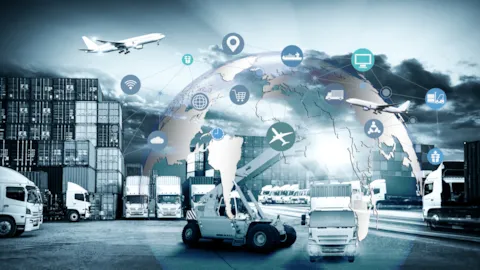Supply chain due diligence: Establishing accountability
Supply chain due diligence is evolving rapidly, driven by new regulations, rising ESG expectations, and increasingly complex global networks. To stay ahead, organizations must move beyond a compliance mindset and increase visibility, mitigate risk and build resilience.
In recent years, supply chain due diligence has moved rapidly from a niche compliance requirement to a strategic priority for businesses worldwide. Driven by evolving regulation, rising stakeholder expectations, and the growing importance of sustainability, organizations now face the challenge of embedding accountability and ESG performance throughout increasingly complex supply networks.
To succeed, companies must shift from a compliance-driven approach, focused only on meeting the minimum legal requirements, to a performance-driven strategy that strengthens resilience, builds trust, and creates long-term commercial value. This transition requires organizations to align regulatory obligations with business objectives, while addressing the diverse challenges posed by their own supply chain maturity and sustainability journey.
From compliance-driven to performance-driven
For many organizations, compliance with supply chain due diligence regulations is the starting point. Laws such as the German Supply Chain Due Diligence Act, the EU Corporate Sustainability Due Diligence Directive (CSDDD), and sector-specific requirements have created a landscape where minimum compliance is no longer optional.
However, stopping at compliance alone risks creating processes that are reactive, fragmented, and limited in value. Leading organizations are beginning to recognize that due diligence can become a performance lever: strengthening supplier relationships, reducing risks, and enhancing long-term resilience.
No two organizations are at the same point in their sustainability journey. Some are still mapping their supply chains, while others are already implementing advanced ESG metrics and reporting mechanisms. Across this spectrum, common challenges include:
- Visibility: understanding supplier practices deep into multi-tier networks.
- Consistency: aligning global operations with diverse regional regulations.
- Integration: embedding ESG accountability into procurement, risk, and performance management.
- Value creation: ensuring that due diligence efforts also strengthen competitiveness and trust.
Organizations can tackle these challenges by aligning compliance with business objectives and leveraging proven frameworks to build resilience.
Over the past five years, the regulatory environment for supply chain due diligence has accelerated significantly. Requirements now extend beyond traditional environmental and social risks to include climate impact, human rights, and responsible sourcing. This trend shows no sign of slowing, and companies need scalable approaches to ensure long-term compliance.
By building robust due diligence systems today, organizations not only prepare for incoming legislation, but also position themselves to lead in responsible and sustainable business practices.
How DNV’s digital capabilities support organizations
Meeting these challenges requires more than policies: it requires data-driven insights and digital solutions. DNV leverages AI-powered supply chain mapping and advanced analytics to give our consultants a clear view of multi-tier networks. We then translate these insights into practical, actionable strategies for you to mitigate risks, ensure regulatory compliance, and strengthen resilience. There’s no need for new systems or integrations, we deliver results directly through tailored advisory services.
We can help organizations to:
- Map their entire supply chain beyond tier-1 suppliers, uncovering hidden risks.
- Gain real-time visibility into supplier practices across geographies.
- Strengthen due diligence with data-driven ESG assessments.
- Monitor compliance with evolving legislation across multiple jurisdictions.
- Build a shared source of truth that fosters trust and collaboration within the supply ecosystem.
This means organizations can move beyond compliance to establish accountable, transparent, and future-ready supply chains. This integrated approach allows businesses not only to meet regulatory demands, but also to build supply networks that are more resilient to disruption, more trusted by stakeholders, and more aligned with the sustainability expectations of global markets.
9/29/2025 8:22:00 AM




